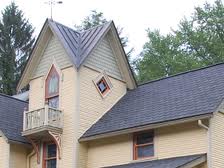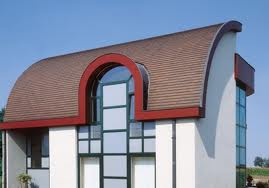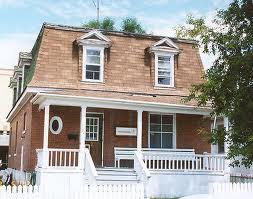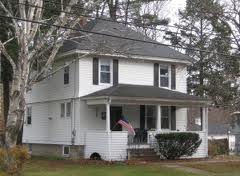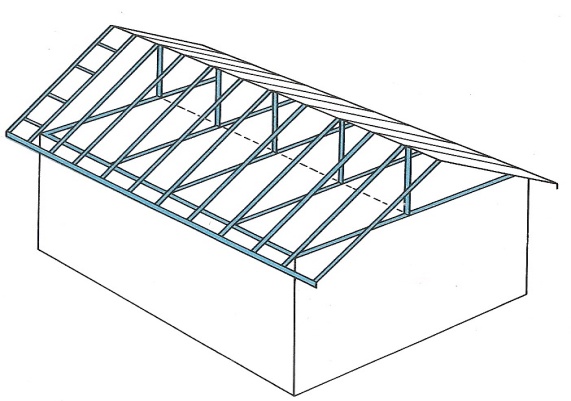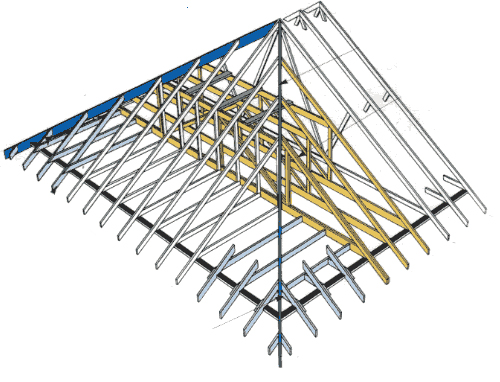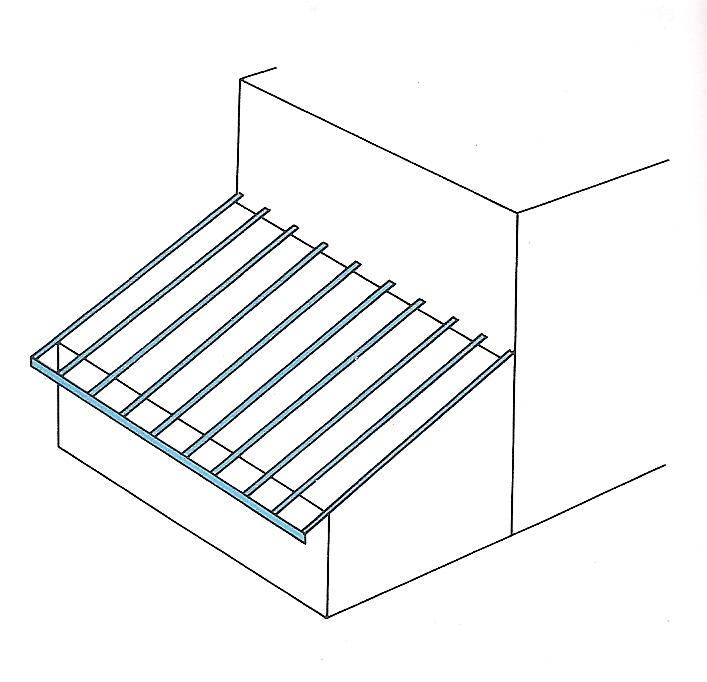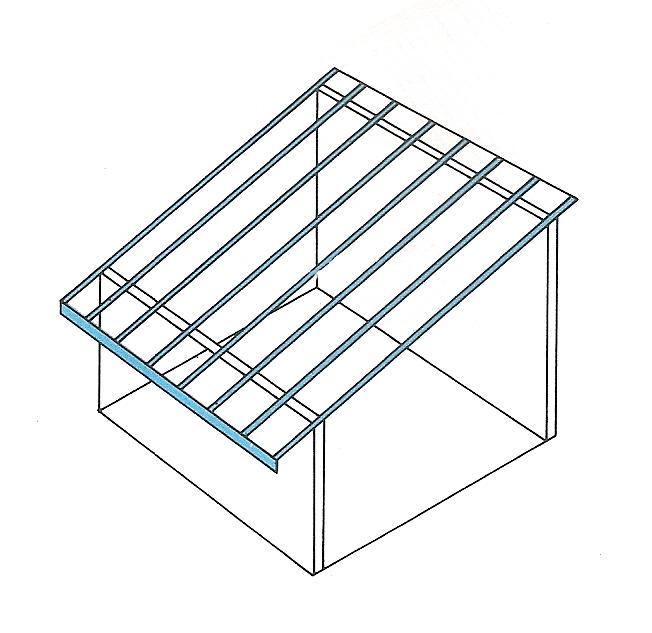
- •English for builders and architects Английский язык для строителей и архитекторов
- •Foreword
- •Структура и содержание пособия
- •The construction-related engineering profession
- •Part I. The art of architecture
- •2 In which situations would you put each point from Ex.1 into the first place?
- •3 Discuss the following quotations:
- •4 A) Look at the title. What does it refer to?
- •The natural beginning
- •5 Read the text again and answer the questions that follow (1-6):
- •7 A) Explain the words in bold from the text and make up sentences of your own. Use English-English dictionaries to help you;
- •8 Give the English equivalents and use them in small situations:
- •9 Use the words below to complete the sentences:
- •10 Choose the correct word to fill in the gaps:
- •11 Fill in the gaps in the following passage with the suitable preposition given below:
- •13 Look at the pictures and name the type of the window using information from Ex.12:
- •14Fill in the gaps with the derivatives of the words in capitals: Benefits of Daylighting
- •15 A) Read the texts and summary questions below:
- •16 Listen to Greg Deale - the general manager of the Daylight Designs - and answer the questions given:
- •17 Watch the video “Solatube interview at the Better Homes & Gardens Live expo - Sydney 2010”. Present the main idea of the video in 4-5 sentences using the expressions from Appendix 2.
- •18 Make up a dialogue using the information from the Ex. 19, 20. One of the students is Solatube Daylighting Systems manager and another one is a customer.
- •19 Study the table and put the materials in the order of your preference. Discuss it with your partner using the expressions from Appendix 1: frame and sash construction
- •20 Express your opinion on the problem raised in Ex.15 and discuss it with your partner using the expressions from Appendix 1.
- •21 Read the abstract from a report “Solatube® Daylighting System” by y. Selyanin and summarize it in 100-150 words in English. Use clichés and word combinations from Appendix 2:
- •2 2 Information for curious ones:
- •23 Topics for projects and presentations:
- •What is “architecture”?Read the following information and compare your answer:
- •A) What architectural styles do you know?Define “architectural style” as you see it:
- •D iscuss the following quotations:
- •4 A) In what context do you think the following words and phrases will appear in the text?
- •Read the text quickly and check your answers: egyptian architecture
- •5 Read the text again and answer the questions that follow (1-5):
- •6 A) Find in the text the synonyms for the following words:
- •7 Choose the right sentence:
- •8 Give the English equivalents to the following and use them in small situations:
- •9 Fill in the gaps in the following passage with a suitable preposition given below: roman arcitecture Part I
- •10 Choose the correct word to fill in the gap: roman arcitecture Part II
- •11 Fill in the gaps with derivatives of the words in capitals: roman arcitecture
- •13 “Architecture and Design” Louis Kahn.
- •14 Watch the video and present the main idea of each episode in 4-5 sentences using the expressions from Appendix 2.
- •15 A) Read the following passages and underline the parts where the answer to each of the following questions is contained:
- •18 Study the following quotations and use them in your own situations:
- •19 Render this text in English: колизей
- •20 Express your opinion on the magnitude of the Roman Coliseum and discuss it with your partner using the expressions from Appendix 1.
- •21 Topics for projects and presentations:
- •Part II. Building materials
- •1 A) Explain how the following words are connected with “bricks”:
- •Coloured mortars
- •9 Use the words below to complete the sentences: clay bricks Part I
- •10 Fill in the gaps with derivatives of the words in capitals: clay bricks
- •11 Fill in the gaps in the following passage with a suitable preposition given below: clay bricks Part III
- •12 Look at the text, separate the words to make sense: clay brick paving
- •13 Listen to “a method of Brick Construction” and do the assignments given below:
- •Listen to the information and present the main idea of it.
- •Answer the questions:
- •14 Watch the video and present the main idea of each episode in 4-5 sentences using the expressions from Appendix 2.
- •15 A) Read the following passages and underline the parts where the answer to each of the following questions is contained:
- •16 Your company wants to place an order with the brick-making plant. Write the letter of inquiry in which you should ask about:
- •18 Study the Table 3.1 and find information about each property:
- •20 Read the text and say what category of bricks is preferable in the territory you live according to the climate conditions in and why: frost resistance
- •21 Topics for projects and presentations:
- •A) Match the words with the pictures (more than one answer is possible):
- •2 Read the following information and offer your ideas of further development and usage of cement:
- •3 Discuss the following:
- •4 A) Transcribe the following words:
- •Read the text and check your answers:
- •5 Read the text again and answer the questions that follow (1-10):
- •9 Use the words below to complete the sentences:
- •11 Fill in the gaps in the following passage with a suitable preposition given below: properties of cement
- •12 Find and correct 10 mistakes:
- •13 Translate into Russian without a dictionary: lime
- •14Listen to Rick Bohan who speaks about cement and concrete.
- •15Watch the video and present the main idea of each episode in 4-5 sentences using the expressions from Appendix 2.
- •16 Render the text in English using the expressions from Appendix 2: виды коррозии бетона
- •17 Your company is ready to place an order with the cement plant. Write the letter of order in which you should:
- •18 Translate the sentences from Russian into English. Be ready to present them not looking at the English equivalents:
- •19 Study the table, find information about each property and make reports in groups of 2-3:
- •20 Read the text. Make up a dialogue based on the text. Use the linking words/phrases from Appendix 1:
- •21 Read the text, find additional information and make a report: concrete properties
- •Topics for projects and presentations:
- •1 A) Explain how the following words are connected with “timber”:
- •Read the information below and compare your answers:
- •2 Speculate on the areas of timber application.
- •3 Discuss the following proverbs:
- •4 A) Transcribe the following words:
- •Read the text and check your answers: timber and timber products
- •Read the text again and answer the questions that follow (1-7):
- •6 A) Find the synonyms for the words given in italics.
- •7 Give the English equivalents to the following and use 5 of them in small situations:
- •8 A) Scan the text, but at ten points fragments have been removed. Study the list with the missing fragments and decide where they go:
- •9 Use the words below to complete the sentences: moisture control
- •13 Look at the text, separate the words to make sense: controlling termites and other insects
- •14 A) Translate into Russian without a dictionary: timber reduces carbon cost
- •14 Audio “Woodworking Information - Different Types of Wood”.
- •1 5Watch the video and present the main idea of each episode in 4-5 sentences using the expressions from Appendix 2.
- •Translate into English using your active vocabulary:
- •21 Study the vocabulary given below and present your project of a wood house.
- •22 Revise material of the Unit 5 and present a full characteristic of a timber.
- •23 Topics for projects and presentations:
- •2 Read the advertisements and in two minutes be ready to speculate on stone applications. What are other areas of stone applications?
- •4 A) Transcribe the following words:
- •Stone and cast stone
- •5 Read the text again and answer the questions that follow (1-10):
- •6 A) Find the synonyms for the following words:
- •Explain the words in bold from the text and make up sentences of your own. Use English-English dictionaries to help you.
- •7 Give the English equivalents to the following and use 5 of them in small situations:
- •8 Read and give a literate translation of the text and make 5 questions to it: slate
- •9 Use the words below to complete the sentences: cast stone
- •11 Fill in the gaps in the following passage with a suitable preposition given below:
- •13 Find and correct 10 mistakes, both spelling and grammar, in each text:
- •14 Audio “Igneous, Sedimentary and Metamorphic Rocks”.
- •15 Watch the video and present the main idea of each episode in 4-5 sentences using the expressions from Appendix 2.
- •16 A) Read the following passage and underline the parts where the answer to each question is contained:
- •Translate into Russian without a dictionary:
- •Read two passages and analyze the problem raised. To study the problem more thoroughly find additional information on the causes of deterioration of stone:
- •19 A) Read the text and express its main idea in 3-4 sentences:
- •Read the instruction how to make a stone cladding. But the phases are messed up. Arrange them into correct order:
- •Talk about stone cladding.
- •20 Read the text. Make up a dialogue based on the text using the expressions from Appendix 1: cast stone vs. Natural limestone
- •21Topics for projects and presentations:
- •2 Read the following passages and offer your ideas to complete them:
- •Appropriate interior paint colors can revitalize every surface of your home, from the walls and ceilings to the doors, paneling, and trim. Thousands of combinations are available…
- •4 A) Transcribe the following words:
- •Read the text and check your answers:
- •Paints, wood stains, varnishes and colour
- •5 Read the text again and complete the sentences (1-10):
- •6 A) Paraphrase the following words:
- •7 Give the English equivalents to the following and use 5 of them in small situations:
- •8 Read and give a literate translation of the text and make 5 questions to it:
- •9 Use the words below to complete the sentences:
- •11 Fill in the gaps in the following passage with a suitable preposition given below:
- •Correct 10 mistakes, both spelling and grammar. Translate the text in a written form:
- •Varnishes
- •13 Translate into Russian without a dictionary: paint and varnish removers
- •Audio “White Stain Varnish -- Panelling Indoors”.
- •16Watch the video and present the main idea of each episode in 4-5 sentences using the expressions from Appendix 2.
- •17 Render the text in English using the expressions from Appendix 2: лакокрасочные материалы в строительстве
- •18 Translate the sentences from Russian into English. Be ready to present them not looking at the English equivalents:
- •19 Read two passages and analyze the problem raised. To study the problem more thoroughly find additional information on safety rules: техника безопасности при малярных работах
- •Safety issues
- •20 A) Read the instruction how to make a clear finish varnish coat. But the phases are messed up. Arrange them into correct order:
- •Talk about clear finish varnish coat.
- •21 Read the text. Make up a dialogue based on the text using the expressions from Appendix 1:
- •22 Topics for projects and presentations:
- •Part III. Architecture of civil buildings
- •2 A) What is the purpose of foundations? Express your opinion in 3-5 sentences.
- •3 Discuss the following:
- •4 A) Transcribe the following words:
- •Foundations
- •10Use the words below to complete the sentences: types of foundation Part II
- •11 Fill in the gaps in the following passage with a suitable preposition given below: types of foundation Part III
- •12 Match the English terms (b) and their definitions (a).
- •13 A)Fill in the table with the information from the text given and your additional info:
- •14 Audio “How to Lay Foundations”.
- •15 Watch the video and present the main idea of each episode in 4-5 sentences using the expressions from Appendix 2.
- •16 Render the text in English using the expressions from Appendix 2: гидроизоляция фундаментов
- •17 Translate the sentences from Russian into English. Be ready to present them not looking at the English equivalents:
- •18 Study the table, find information about each step:
- •19 Read the text. Make up a dialogue based on the text. Use the linking words/phrases from Appendix 1: виды фундаментов, применяемых в строительстве
- •20 Read the passages from Builder’s Foundation Handbook (by John Carmody, Jeffrey Christian, Kenneth Labs), find additional information to each point given in bold and discuss them:
- •21Topics for projects and presentations:
- •Match the columns to remember some technical words for parts of a roof.
- •Read the text again and answer the questions that follow (1-8):
- •6 A) Find the synonyms in the text and rephrase the sentences using them:
- •7 Give the English equivalents to the following and use 5 of them in small situations:
- •8 Read and translate the text and make 5 questions to it:
- •9Use the words below to complete the sentence: popular roofing materials Part I
- •11 Fill in the gaps in the following passage with a suitable preposition given below: popular roofing materials Part III
- •12Translate into English without a dictionary:
- •13 Audio “Components of a Proper Roofing System”.
- •14Watch the video and present the main idea of each episode in 4-5 sentences using the expressions from Appendix 2.
- •15Render the text in English using the expressions from Appendix 2: выявление дефектов кровли
- •18 Read the text and prove in English that roof construction in winter is possible. Устройство плоской кровли зимой
- •19 Read the text. Discuss the problem raised in the text with your partner. Use the linking words/phrases from Appendix 1:
- •20 Study the information below, find additional information on each point and speculate on the problem raised in the text. Use the linking words/phrases from Appendix 1:
- •Ifferent methods of pitched roof construction
- •Topics for projects and presentations:
- •10.1 Types of Walls
- •1 Explain how the following words are connected with “walls”:
- •3 Discuss the following:
- •4A) Transcribe the following words:
- •Read the text and check your answers: walls
- •5 Read the text again and answer the questions that follow (1-7):
- •6 A) Find in the text the synonyms for the following words:
- •7 Give the English equivalents to the following and use 5 of them in small situations:
- •8 Ask questions to the following:
- •9 Fill in the gaps with derivatives of the words in capitals:
- •10 Use the words bellow to complete the sentences: building vaterials for external walls Part II
- •A) Match the parts of arch and words given:
- •12 A) Translate into Russian without a dictionary:
- •Interor wall construction
- •13 Look at the text, separate the words to make sense:
- •14 Listen to the audio “Wall Construction” twice and be ready to answer the questions below(1-5):
- •15Watch the video and present the main idea of each episode in 4-5 sentences using the expressions from Appendix 2.
- •16 Render the text in English using the expressions from Appendix 2:
- •Трехслойная стена с вентилируемым зазором
- •(Парута в.А., Брынзин е.В.
- •Руководство по проектированию и возведению зданий с использованием изделий торговой марки udk gazbeton, Днепропетровск 2009)
- •17 Translate the sentences from Russian into English:
- •18 Read the text, find additional information and speculate on the problem raised: типичные ошибки, допускаемые при строительстве стен
- •19 Read the text. Discuss the problem raised in the text with your partner. Use the linking words/phrases from Appendix 1:
- •20 Study the information bellow, find additional information and speculate on the problem raised in the text. Use the linking words/phrases from Appendix 1:
- •21 Topics for projects and presentations:
- •1 Match the idioms with the definitions and use them in your own situations:
- •2 Explain how the following words and expressions are connected with “floors”:
- •3 Discuss the following:
- •4 A) Transcribe the following words:
- •Read the text and check your answers: floors
- •Read the text again and answer the questions that follow (1-8):
- •6 A) Find the synonyms in the text for the following words:
- •7 Give the English equivalents to the following and use 5 of them in small situations:
- •8 Which questions could you ask to get these answers?
- •9 Use the words below to complete the sentences: the hardcore bed
- •10 Put the steps of making a simple raft foundation slab into the correct order: the raft foundation slab
- •11 Fill in the gaps in the following passage with a suitable preposition given below: upper floor construction Part I
- •12 Fill in the gaps with derivatives of the words in capitals:
- •13Read the text and choose appropriate headings to each step: laminate flooring installation
- •14 Audio “Laminate Floor Installation”.
- •15 Watch the video and present the main idea of each episode in 4-5 sentences using the expressions from Appendix 2.
- •16Render the text in English using the expressions from Appendix 2: деревянные полы
- •17 Translate the sentences from Russian into English. Be ready to present them not looking at the English equivalents:
- •18 Analyze Figure 11.5. And say in what case a suspended concrete structure is possible/ impossible to build and explain your choice.
- •19Read the questions people ask specialists from Peter Cox and suggest your own answers:
- •20 A) Read and translate the text: why are we still having problems with moisture and concrete floor slabs?
- •21 Read the information below and discuss it with your partner: bamboo flooring
- •22Topics for projects and presentations:
- •Unit 12
- •Match the columns:
- •Explain how the following words and expressions are connected with “green building”:
- •3 Discuss the following:
- •4 A) Transcribe the following words:
- •Read the text and check your answers:
- •Read the text again and answer the questions that follow (1-10):
- •6 A) Find the synonyms in the text and rephrase the sentences using the given expressions:
- •7 Give the English equivalents to the following and use 5 of them in small situations:
- •8 Read and translate the text and make 5 questions to it:
- •10Use the words below to complete the sentences: air purification
- •11 Fill in the gaps in the following passage with a suitable preposition given below: water purification
- •12 Translate into Russian without a dictionary:
- •13 Audio ”Passive Homes Save Energy, Money”.
- •14 Watch the video and present the main idea of each episode in 4-5 sentences using the expressions from Appendix 2.
- •15Render the text in English using the expressions from Appendix 2: нанобумага
- •16 Translate the sentences from Russian into English. Be ready to present them not looking at the English equivalents:
- •17 Read the advertisement, visit the given sites, study “Case Studies” and “Factsheets” and write a short summary (200-250 words) about vinyl and its application:
- •18 Group work: choose five questions from the list below, find and present information:
- •19 Read the text, find information on the offered projects and discuss it with your partner: зеленые здания – перспективное направление в строительной индустрии
- •20 Study the information below, find additional information on disadvantages of green buildings and make up a report: the hidden risks of green buildings: why moisture & mold problems are likely
- •21Topics for projects and presentations:
- •Supplementary reading
- •Early christian and byzantine architecture
- •Give a literary translation of §§1, 2, 8.
- •You misheard the information. Make it more exact, putting questions:
- •What is your impression of the information given in the text? Express your ideas in 3-4 sentences.
- •In a paragraph of 70-100 words, and using your own words, as far as possible, summarize what the text tells us about and early Christian and Byzantine architecture.
- •Find and present additional information on any church mentioned in the text.
- •Orders of architecture
- •Mortars
- •6 Give a literary translation of §§7 – 10.
- •What is your impression of the information given in the text? Express your ideas in 3-4 sentences.
- •In a paragraph of 70-100 words, and using your own words, as far as possible, summarize what the text tells us about mortars.
- •Find and present additional information on any type of mortars you like.
- •Unit 4 glass
- •What is your impression of the information given in the text? Express your ideas in 3-4 sentences.
- •In a paragraph of 70-100 words, and using your own words, as far as possible, summarize what the text tells us about the staircases.
- •Unit 5 stairs
- •What is your impression of the information given in the text? Express your ideas in 3-4 sentences.
- •In a paragraph of 70-100 words, and using your own words, as far as possible, summarize what the text tells us about the staircases.
- •Find and present additional information on any staircase layouts you like.
- •Unit 6 doors
- •7 You’ve misheard the information from the previous assignment. Make it more exact, putting questions:
- •Give a literary translation of the first and the last two paragraphs.
- •What is your impression of the information given in the text? Express your ideas in 3-4 sentences.
- •In a paragraph of 70-100 words, and using your own words, as far as possible, summarize what the text tells us about the types of doors.
- •Find and present additional information on any type of doors you like.
- •Appendix 1 communication clichés
- •Appendix 2 review clichés
- •Appendix 3 business letter writing
- •The letter of enquiry (inquiry)
- •Template
- •The letter of order
- •Template
- •The letter of complaint
- •Template
- •Samples
- •English-russian vocabulary
- •Glossary of construction terms
- •Список использованной литературы
Match the columns to remember some technical words for parts of a roof.
Figure 9.1.may help you:
|
a) a thin timber board that is fixed to the end of rafters or roof joints to support the gutters |
|
b) a short rafter that spans the hip and eaves or valley and ridge |
|
c) the horizontal board that can be fixed to finish the roof structure at the eaves |
|
d) it can be: a) a horizontal timber member that provides support to the rafters; b) a timber member spanning between roof trusses that supports roof sheets |
|
e) the horizontal distance between the supports of structural members such as the rafters |
|
f) the timber member fixed to the top of a wall to secure a flat roof joist or rafter |
|
g) the timber member that spans from the eaves to the ridge in a pitched roof |
|
h) a timber at the apex of the roof that takes the tops of the rafters |
|
i) the bottom end of the roof where it meets the wall |
|
j) the point where two inclined roof surfaces meet over an internal angle |
|
k) the external material that is laid over the roof structure to protect the inside of the building |
|
l) the edge of a roof that meets a gable wall |
|
m) a tile that caps the top of the roof |
|
n) the angle formed by the slope of the roof |
|
o) the slope required on flat roofs for water run-off |
|
p) the point where two inclined roof surfaces meet over an external angle |
2 a) What types of roofs do you know? Use English-English dictionaries.
Look at the pictures. What roof would you prefer for your house? Explain your choice in 3-5 sentences:
|
|
Cross Gabled Roof b) Arched Roof
|
|
Mansard Roof d) Pyramid Roof
3 Discuss the following:

• Write a paraphrase. • Say whether you agree or not, and why.
4 a) Transcribe the following words:
retain, ensure, weighted, storage, triangular, require, joists, corrugated, securely.
b)In what context do you think the following words and phrases will appear in the text?
• topmost part• interior cool• resisting fire• supporting structure• storage space• gable end• meet right angles• water-proof covering•corrugated sheets • galvanized steel ties• rafter
Read the text and check your answers:
ROOFS
A roof is the topmost part of a building. It is a covering constructed over the enclosed space to:
- keep out rain and wind;
- provide shade from the sun;
- keep the interior cool;
- retain heat in cool weather;
- ensure that the structure is properly weighted down.
Roofs should meet the following basic standards of performance: 1) allowing rainwater to flow freely away; 2) expanding and contracting without failure; 3) resisting fire adequately; 4) providing light and ventilation; 5) durability.
In this unit two types of roofs are considered: pitched roofs and flat roofs.
A pitched roof is often a popular choice. The main supporting structure is timber, which is easy to work and transport. A pitched roof is stablein most weather and its slope disposes of rainwater quickly. Additionally, the space enclosedby the roof can add some extra living or storage space.
In simple roof construction these types of roof are usually found:
Gable roof In this type of roof the ends of the roof enclose the end walls. The triangular wall between the roof verges is called the gable end. |
|
Hipped roof A hipped roof is formed when two roof slopes meet right angles.
|
|
Lean-to roof This roof has a single pitch that rests against a higher wall. |
|
Mono-pitch roof This roof has a pitch in one direction. The ridge does not rest against anything.
|
|
Three parts of a pitched roof affect the structural design: span; pitch; roof covering.
The span is the distance between the masonry structures that support the roof. The structure of the roof becomes more complex as the span increases.
The pitch is the angle of the slope of the roof measured from the horizontal. A steeper pitch needs more roof covering material, which increases the weight to be supported. The surface area affected by wind is also greater. The roof needs to be strong enough to allow for these factors.
The roof covering material varies from lightweight sheets that weigh 12kg/m2 to plain clay tiles that weigh 65 kg/m2.
Flat roofs, which can be timber or reinforced concrete, are popular forms of roofing for houses. Their advantages are:
- they are very easy to put up;
- they can create extra usable space if they are accessible;
- they are easily maintained.
Their main disadvantages are that:
- they lose heat;
- they are not as weatherproof as pitched roofs;
- the finishes do not last as long as roof tiles.
The structure of a flat timber roof is shown in Figure. 9.2. and it requires: a deck or a slab; a method for disposing of rainwater; a watertight covering; some insulation.
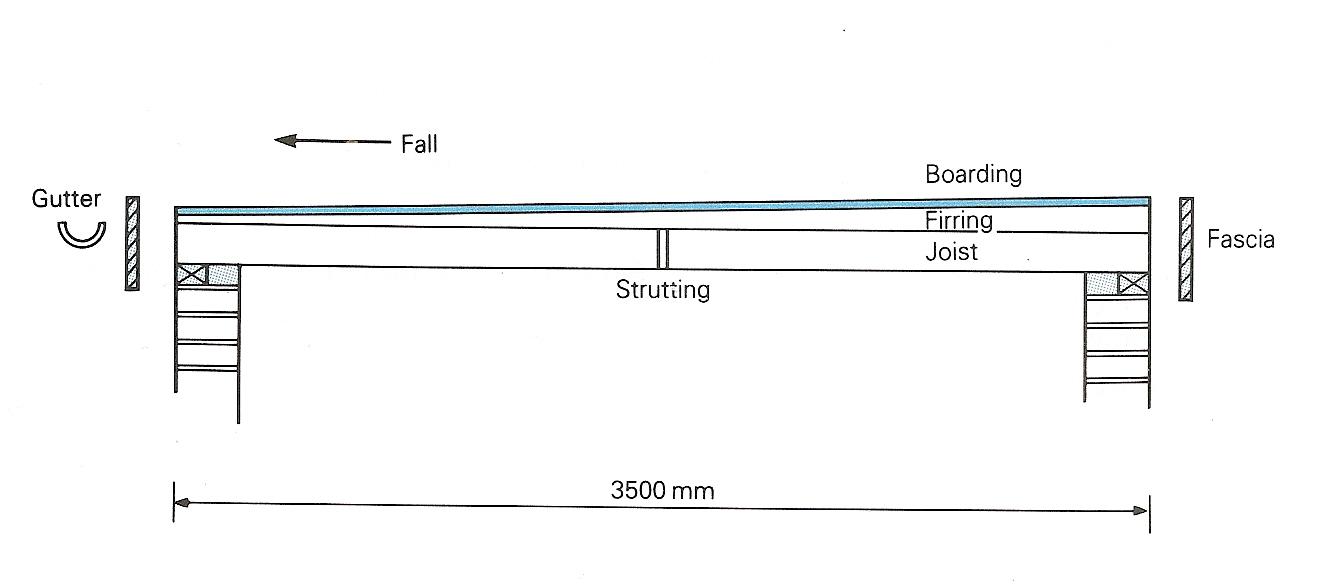
Figure 9.2 Flat Timber Roof Structure
The joists span between the supporting walls and boarding is fixed over the joists to form a deck for the water-proof covering. Here the deck must have enough slope to get rid of rainwater. Slopes can be made by fixing strips of wood called firrings to the top of the joists.
Wind pressure can strip off tiles, lift overhanging eaves and verges and blow off corrugated sheets. If the roof covering is fixed very securely to the roof framework, then a strong wind could lift off the timbers of the roof structure.
This can be prevented by using galvanized steel ties every 1800 mm. They should be taken across the wallplate and down the wall for 600 mm and embedded in mortar joint. The ties can also be taken around the rafters to secure the roof structure against the lifting action of wind.

